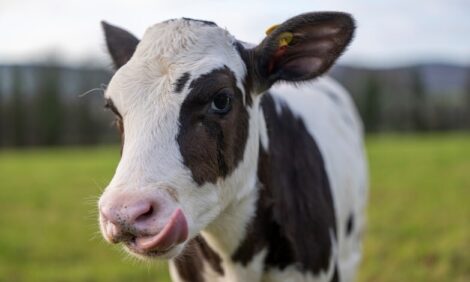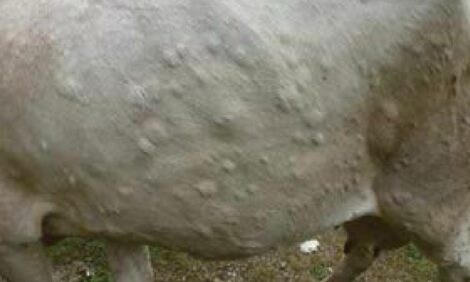



Improved Variants of Forage Lead to Energy Efficiency
The efficient use of energy and nitrogen is of increasing importance to the average producer as they strive to get higher returns from forage. To help them achieve this new benchmark of efficiency improved variants of forage are being produced, writes Adam Anson, reporting for TheCattleSite.
Head of Science Development
Many livestock industries across the globe are reliant on grasslands, but the nutritional value of grass can be wasted due to lack of control.
Traditionally, plant breeding programmes have focused largely on improving agronomic characteristics of forage grasses and legumes, but changes in farming priorities is leading to an increased focus on the nutritional characteristics of forages.
The greatest source of nitrogen and energy inefficiencies in cattle can be sourced to the rumen. Not only does this digestive process lead to wasted resources, but it also contributes to greenhouse gas emissions, potential water pollutants, and a concomitant loss of production potential.
One of the key pollutants, Nitrous Oxide, has a greenhouse gas index 300 times higher than that of C02. 45 per cent of these Nitrous Oxide emissions are believed to come directly from grazing and manure.
The economic implications for the producer are also of great concern. The amount of methane that a cattle produces is proportional to the amount of energy that is wasted. Similarly, the more energy that is wasted, the more food the cattle must be provided.
From the UK alone 890 kilotonnes of methane is estimated to be produced by the livestock industry, most of which is due to anaerobic fermentation processes inside cattle.
The implications of this waste is clear to see. However, according to Mike Theodorou from the Institute of Grassland and Environmental Research, novel plant breeds have emerged that promise to reverse this problem.
Nitrogen and Energy Efficiency in the Rumen
Speaking at the 42nd Nottingham Feed Conference, Prof. Theodorou explained that when a cow eats forage the plants go into the rumen with the plant cells intact. It was once believed that bacteria inside the rumen broke down these cell walls before digestion, but new research has shed light on the probability that microorganisms play a large part in this process. "After ingestion degraded plant nitrogen that is not captured by rumen microbes tends to be absorbed as ammonia," he said. This valuable source will then inevitably be excreted in urine.
Methane is also wasted during the natural fermentation process of the rumen. According to Prof. Theodorou, two separate research projects, conducted this year (2008), conclude that these two processes alone result in approximately a third of all methane emissions and half of the nitrous emissions that arise from human-influenced activities.
"Nitrogen use efficiency in the rumen can be improved in two main ways," says Prof. Theodorou. "By matching the availability of energy to protein, or by reducing protein degradability to match energy availability."
Advances in breeding technology has opened up the potential of pasture. "Modern breeding technology is less phenotype and more genetic marker." He said. The process requires the "precise transfer of small amounts of genes" to "combine novel features".
Genetic Advances
According to Prof. Theodorou, recent advances in ryegrass breeding aimed at increasing the concentration of water-soluble carbohydrates have led to varieties that have been shown to reduce the proportion of dietary nitrogen intake that is excreted as urinary nitrogen.
He says that although increasing the ratio of water soluble carbohydrate to crude protein in grass leads to significant reductions in excretion of nitrogen in urine, the high concentrations of crude protein required for optimum grass growth are likely to mean that impractically high concentrations of water soluble carbohydrates would be required. Therefore, the second approach, reducing protein degradability, also has practical potential to improve rumen protein use efficiency.
"A number of natural protein protection mechanisms could be exploited to reduce rumen protein availability," he says. Several varieties of important feed crops, including ryegrass, exhibit stay-green mutations whereby senescent material retains chlorophyll and associated proteins rather than mobilising the nutrients for use elsewhere in the plant.
Prof. Theodorou said that the researchers; Kingston-Smith, Bollard, Humphreys and Theodorou (2002), found that although there was no difference in availability of nitrogen in fresh stay-green ryegrass compared with a standard variety, stay-green ryegrass had higher protein content when comparing senescent material. This indicates the potential for its use as standing hay.
The presence of various enzyme systems and plant secondary metabolites also has the potential to improve nitrogen and energy use in the rumen. Polyphenol oxidase (PPO) is an enzyme present in certain plants including red clover (Jones, Muck and Hatfield, 1995) that can reduce proteolysis in ensiled clover, and so increase nitrogen use efficiency of the feed in livestock (Broderick, Walgenbach and Maignan, 2001).
"PPO activity is also present in some grasses (Lee, Olmos Colmenero, Winters, Scollan and Minchin, 2006), indicating the potential for its incorporation into other important forage species," says Prof. Theodorou
Condensed tannins present in some forages have been shown to improve the efficiency of capture of microbial protein (Barry and McNabb, 1999). In addition, some tannin-containing forage crops (e.g. birdsfoot trefoil) have been shown to reduce methane emissions when grazed (Ramírez-Restrepo and Barry, 2005), although the agronomic characteristics of many would need improving to make their use practical in the long term.
Conclusions
Prof. Theodorou concluded his presentation by stressing that the development of new environmentally and nutritionally focused priorities such as sustainable agriculture, increased biodiversity, enhanced awareness of functional foods that offer human health benefits and pluralistic land use, mean that the time is right to consider new priorities as breeding objectives.
September 2008

